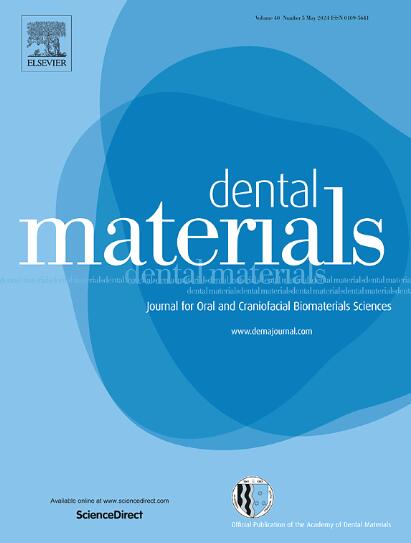基于当前证据的牙齿漂白临床决策:叙述性回顾。
IF 4.6
1区 医学
Q1 DENTISTRY, ORAL SURGERY & MEDICINE
引用次数: 0
摘要
目的:本综述从系统综述、荟萃分析和随机临床试验(rct)中总结了目前在牙医监督下对重要牙齿进行牙齿漂白的知识。资料来源:在PubMed、Scopus和Web of Science数据库中使用MeSH和免费术语,如“牙齿漂白”、“牙齿美白”、“随机临床试验”、“系统评价”。研究选择:从839篇文章中选择444篇进行全文综述,不包括病例报告、非随机试验、文献综述和与牙齿漂白不直接相关的文献或不遵循CONSORT 2010的随机对照试验。其余203项研究用于比较牙医监督的家庭和办公室临床方案,评估诸如颜色变化,牙齿敏感性和牙龈刺激等因素。体外研究被引用来支持和解释不同临床决策的基本概念。结论:每天在家用10 %过氧化脲或低浓度过氧化氢漂白三到四周是有效的。根据HP浓度和凝胶ph值的不同,高浓度过氧化氢的办公室漂白方案也有所不同。紫罗兰色led和红外激光光生物调节等新兴技术分别在提高效果和降低灵敏度方面表现出了希望,但还需要更多的研究。该综述强调了正在进行的脱敏策略研究的重要性,以管理与漂白有关的敏感性。临床意义:牙齿漂白是牙齿美学的核心,提供了一系列的选择,可以挑战临床医生。副作用,特别是敏感性,强调需要临床试验方案和有效脱敏方法的实践支持。本文章由计算机程序翻译,如有差异,请以英文原文为准。
Clinical decision-making in tooth bleaching based on current evidence: A narrative review
Objective
This review consolidates current knowledge on dentist-supervised tooth bleaching for vital teeth, drawing from systematic reviews, meta-analyses, and randomized clinical trials (RCTs) that followed CONSORT guidelines.
Data resources
MeSH and free terms like "tooth bleaching," "tooth whitening," "randomized clinical trial," and "systematic review" were used in PubMed, Scopus, and Web of Science databases
Study selection
Out of 839 articles, 444 were selected for full-text review, excluding case reports, non-randomized trials, literature reviews and those not directly related to tooth bleaching or RCTs not following CONSORT 2010. The remaining 203 studies were used to compare the dentist-supervised at-home and in-office clinical protocols, assessing factors such as color change, tooth sensitivity, and gingival irritation. In vitro studies were cited to support and explain basic concepts of different clinical decisions
Conclusions
Daily at-home bleaching with 10 % carbamide peroxide or lower-concentration hydrogen peroxide over three to four weeks is effective. In-office bleaching with high-concentration hydrogen peroxide exhibits variations in protocols based on the HP concentration and gel’s pH. Emerging technologies like violet LEDs and photobiomodulation with infrared lasers show promise in enhancing efficacy and reducing sensitivity, respectively, though more research is needed. The review underscores the importance of ongoing research into desensitization strategies to manage sensitivity related to bleaching.
Clinical significance
Tooth bleaching is central to dental aesthetics, offering a range of options that can challenge clinicians. Adverse effects, particularly sensitivity, highlight the need for practice supported in protocols clinically tested and effective desensitization approaches
求助全文
通过发布文献求助,成功后即可免费获取论文全文。
去求助
来源期刊

Dental Materials
工程技术-材料科学:生物材料
CiteScore
9.80
自引率
10.00%
发文量
290
审稿时长
67 days
期刊介绍:
Dental Materials publishes original research, review articles, and short communications.
Academy of Dental Materials members click here to register for free access to Dental Materials online.
The principal aim of Dental Materials is to promote rapid communication of scientific information between academia, industry, and the dental practitioner. Original Manuscripts on clinical and laboratory research of basic and applied character which focus on the properties or performance of dental materials or the reaction of host tissues to materials are given priority publication. Other acceptable topics include application technology in clinical dentistry and dental laboratory technology.
Comprehensive reviews and editorial commentaries on pertinent subjects will be considered.
 求助内容:
求助内容: 应助结果提醒方式:
应助结果提醒方式:


